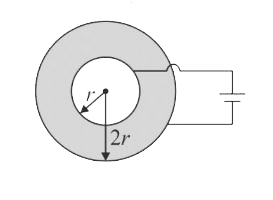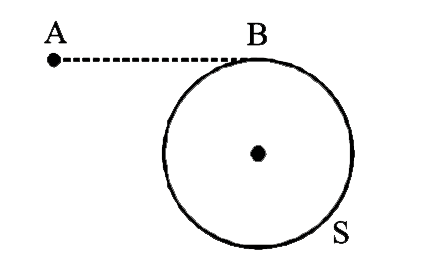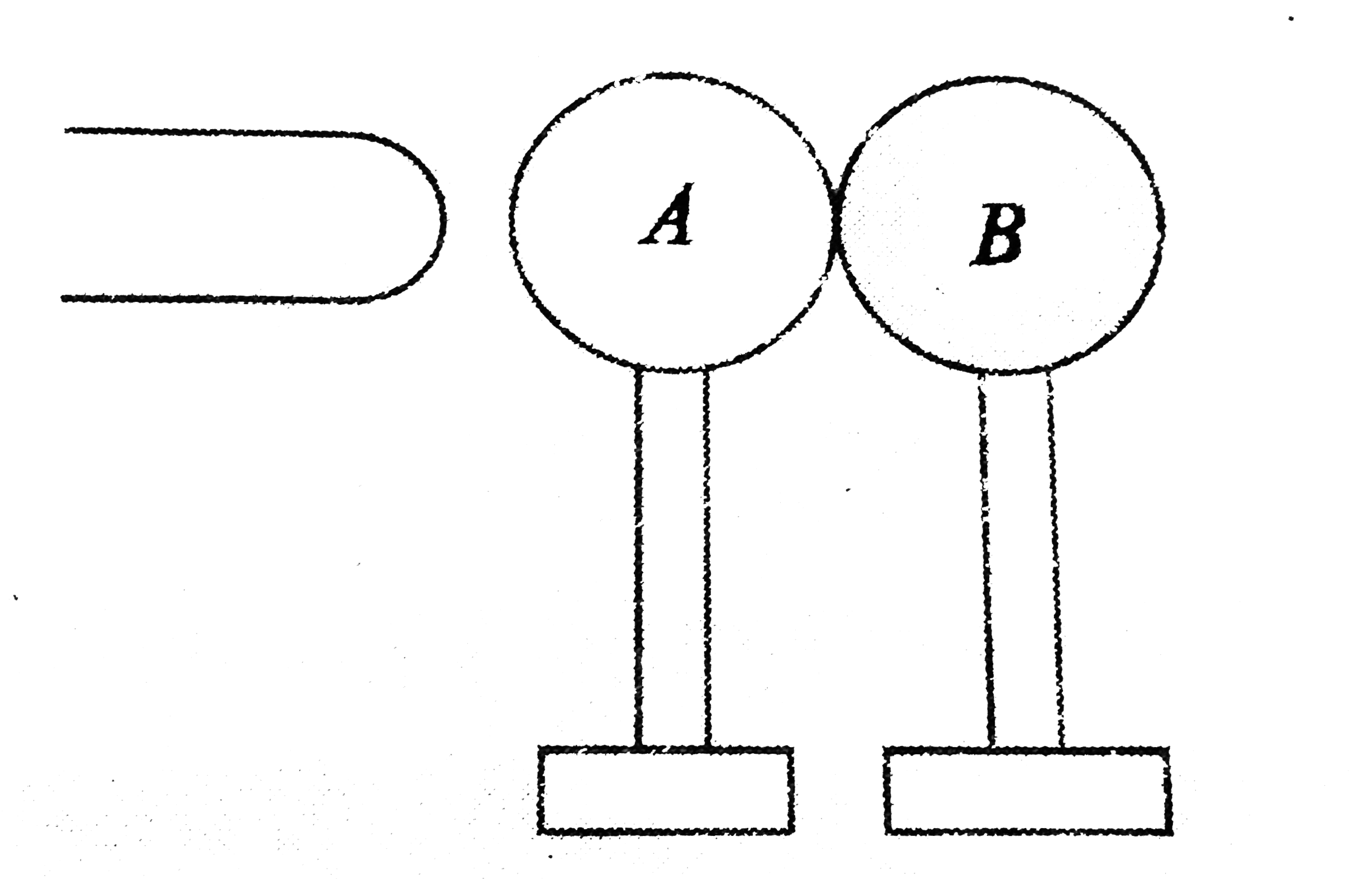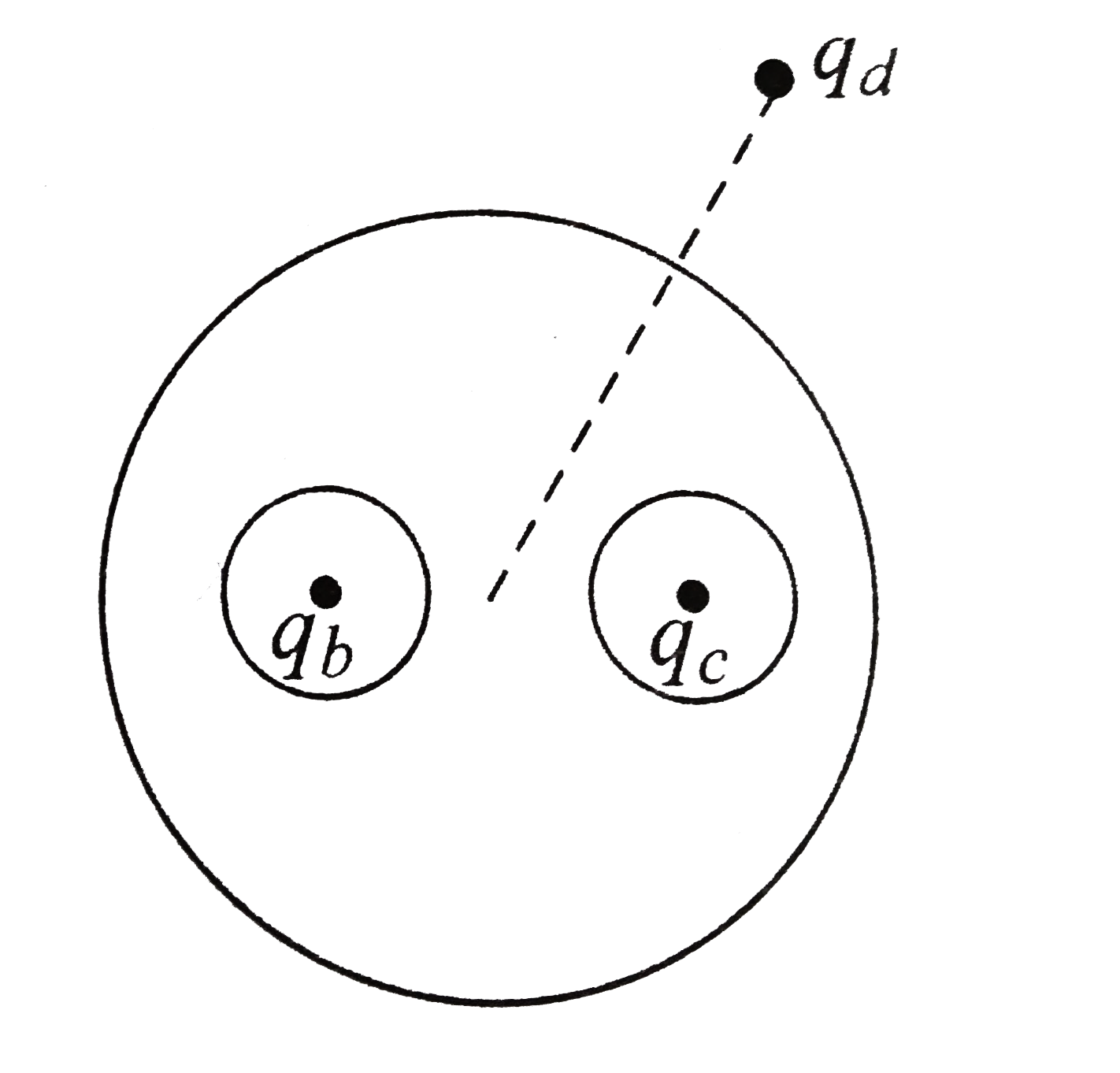Four metal conductors having different shapes
1. A sphere 2. Cylindrical
3.Pear 4.Lightning conductor
Are mounted on insulating stands and charged. The one which is best suited to retain the charges for a longer time is
1
2
3
4
The correct Answer is:A
In case of spherical metal conductor the charge quickly spreads uniformaly over the entire surface because of which charges stay for longer time on the spherical surface. While in case of non-spherical surface, the charge cocnetration is different at different points due to which the charges do not stay on the surface for longer time.
Topper's Solved these Questions
- BOOK - A2ZCHAPTER - ELECTRIC CHARGE, FIELD & FLUXEXERCISE - Electric Field Due To Point Charge25videos
ELECTRIC CHARGE, FIELD & FLUX
- BOOK - A2ZCHAPTER - ELECTRIC CHARGE, FIELD & FLUXEXERCISE - Electric Field And Motion37videos
ELECTRIC CHARGE, FIELD & FLUX
- BOOK - A2ZCHAPTER - DUAL NATURE OF RADIATION AND MATTEREXERCISE - Section D - Chapter End Test30videos
DUAL NATURE OF RADIATION AND MATTER
- BOOK - A2ZCHAPTER - ELECTRIC POTENTIAL & CAPACITANCEEXERCISE - Section D - Chapter End Test29videos
ELECTRIC POTENTIAL & CAPACITANCE
Similar Questions
A conducting sphere S1 of radius r is attached to an insulating handle. Another conduction sphere S2 of radius R is mounted on an insulating stand. S2 is initially uncharged. S1 is given a charge Q brought into contact with S2 and removed. S1 is recharge such that the charge on it is again Q and it is again brought into contact with S2 and removed. This procedure is repeated n times.
a. Find the electrostatic energy of S2 after n such contacts with S1.
b. What is the limiting value of this energy as n→∞ ?View SolutionA conductor in the shape of a cylindrical shell of outer and inner radii 2r and r is connected to an ideal battery as shown. The length of the conductor is m. The charge carrier density in the conductor is n×8×10283−3 The value of r=16cm If the current through the battery is 4A, the drift velocity of electrons at a distance 1.5r from the axis of the conductor is ___________ ×10−6m/s .
 View Solution
View Solution
Knowledge Check
- Question 1 - Select One
Three metal spheres A,B and C are mounted on insulating stands. The spheres are touching one another, as shown in the diagram A strong positively charged object it brought near sphere A and a strong negative charge is brought near sphere C. While the charged objects remains near spheres A anc C, sphere B is removed by means of its insulating stand. After the charged objects are removed, sphere B is first touched to sphere A and then to sphere C. The resulting charge on B would be-
 Athe same sign but 1/2 the magnitude as originally on sphere A.Bthe opposite sign but 1/2 the magnitude as originally on sphere A.Cthe opposite sign but 1/4 the magnitude as originally on sphere ADthe same sign but 1/2 the magnitude as originally on sphere C
Athe same sign but 1/2 the magnitude as originally on sphere A.Bthe opposite sign but 1/2 the magnitude as originally on sphere A.Cthe opposite sign but 1/4 the magnitude as originally on sphere ADthe same sign but 1/2 the magnitude as originally on sphere C - Question 2 - Select One
There are two uncharged identicasl metallic spheres 1 and 2 of radius r separated by a distance d(d>>r). A charged metalllic sphere of same radius having charge q is touched with one of the sphere. After some time it is moved away fom the system. Now, the uncharged sphere is earthed. Charge on earthed sphere is
A+q2B−q2C−qr2dD−qd2r - Question 3 - Select One
Two insulated spherical conductors of capacities 1μFand2μF are charged to 100 V and 200 V respectively. The conductors are then brought in contact. The charges on the sphere after contact are
A1.6×10−4C,3.3×10−4CB2.6×10−4C,3.3×10−4CC1.6×10−4C,4.3×10−4CD2.6×10−4C,4.3×10−4C
A stream of electrons with kinetic energy equal to 100 keV pass across a cross setion of a conductor in 0.5s. If the potential difference between the ends of conductor is 5 V find the number of electrons that pass across the conductor in one second. (The charge on an electron is 1.6×10−19C).
View Solution7S is a solid neutral conducting sphere. A point charge q of 1 × 10–6 C is placed at point A. C is the centre of sphere and AB is a tangent. BC = 3m and AB = 4m.
(1) The electric potential of the conductor is 1.8 kV
(2) The electric potential of the conductor is 2.25 kV
(3) The electric potential at B due to induced charges on the sphere is – 0.45 kV
(4) The electric potential at B due to induced charges on the sphere is 0.45 kV
 View Solution
View SolutionFigure shows that a positively charged rod is brought near two ucharged metal spheres A and B clamped on insulated stands and palced in contact with each other.

(i) What would happen if the rod is removed before the spheres are separated?
(ii) Would the induced charges be equal in magnitude even if the spheres had different sizes or different conductors?
(iii) What will happen if the spheres are separated first and then the rod is rmoved far away?View SolutionA copper conductor is in the shape of a cylindrical shell of length 20 cm and inner and outer diameter 1 cm and 3 cm. A potential difference 200 V is applied between the flat surfaces of the conductor. The current density in it is 10A/m2 . The value of x is ________
View SolutionA spherical conductor A contains two spherical cavities. The total charge on the conductor itself is zero. However, there is a point charge qb at the centre of one cavity and qc at the centre of the other. At considerable distance r away from the centre of the spherical conductor, there is another charge qd. Forces acting on qb,qcandqd are F1,F2,andF3, respectively. [Assume all charges are positive.]
 View Solution
View Solution

